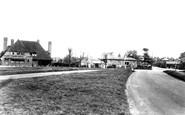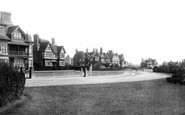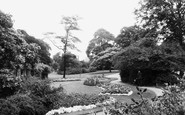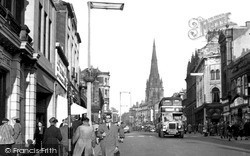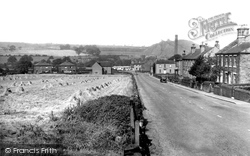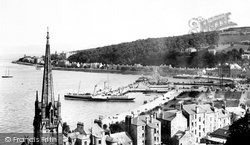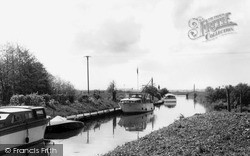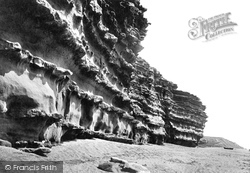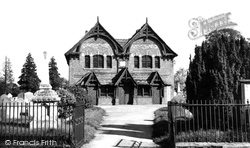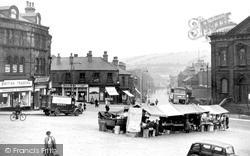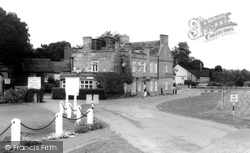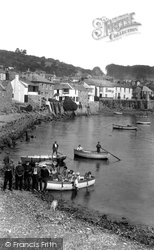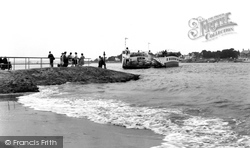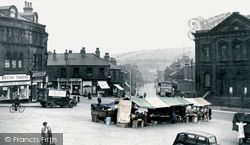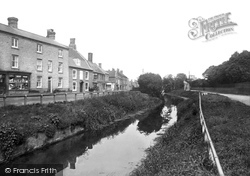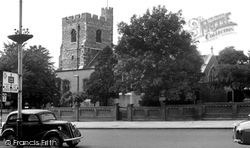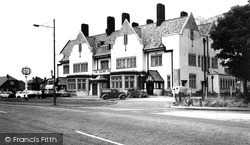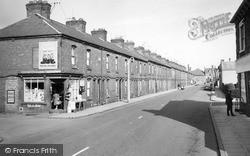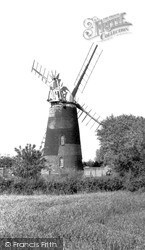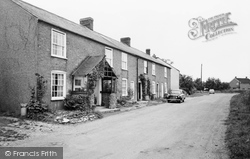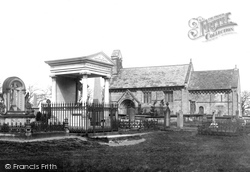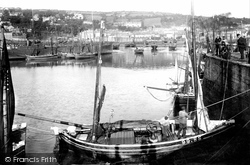Places
2 places found.
Those places high-lighted have photos. All locations may have maps, books and memories.
Photos
5 photos found. Showing results 61 to 5.
Maps
29 maps found.
Books
Sorry, no books were found that related to your search.
Memories
668 memories found. Showing results 31 to 40.
Early 1950s
I was born in Dartord where I lived in Stanham Road until I moved at the age of 9 years. Childhood friends I remember are Anthony Artist, Janet Cork, Michael Burville (not sure of spelling of surname). My next door neighbour was the ...Read more
A memory of Dartford in 1953 by
To School Along The Prom
I lived in Mochdre, and went to the grammar school, 1955-1962. Getting off the bus at the station we would walk along the prom, skipping stones in the sea, or dodging the waves during stormy high tides. Then we would walk ...Read more
A memory of Colwyn Bay in 1955 by
Cooksons Leadworks Part 2
1965. During my time working here I carried out a number of different jobs, one was to make Zinc ingots, my shift would start with my furnace fired up and there next to it would be my "charge" this would be a pile of old ...Read more
A memory of Newburn in 1965 by
Greyhound, Fox & Central Garage
This photo has the 3 places that were a big part of my early working life. I worked in the garage from 63 through 69, the owner was Charles Holland who lived next door, we used the fox pub most evenings & weekends and ...Read more
A memory of Keston in 1963 by
Wartime Evacuee 1939 1940
In August 1939 I was evacuated frm Salford to Caton. I had my gas mask, a small parcel of food and a label on my clothing. We arrived at the then beautiful station, adorned with flowers. Then we walked to the Village ...Read more
A memory of Caton in 1930 by
East Kent Coastal Holidays In The 1950s/60s
As a child the East Kent coast was a regular destination for our 2 week family summer holiday. We usually stayed in Westgate. In the late 1950s the excitement started with the journey from ...Read more
A memory of Westgate on Sea by
Childhood Memories South Park 1960s Approx
I like to remember my childhood in Darlington where I grew up until I moved to Whitley Bay. We used to spend lots of time in the South Park, on the swings, around the rose garden and of course the roller ...Read more
A memory of Darlington in 1960 by
Newtonheath Loco Football Ccub
I remember sneaking into the match by going past the lodging house on Warden Lane and going by the railwayside and through a hole in the fence that the railway men had made so that they could watch ...Read more
A memory of Newton in 1950 by
Mendleson Wrote His Spring Song In The House.
With Denmark Hill and about level with the Old Henly's garage behind you was a house within the ruins with a metal sign. It stated that during his stay here, Mendleson wrote his 'Spring Song' here. ...Read more
A memory of Camberwell by
Fenland Farming Around Peterborough
On reading the book 'PETERBOROUGH A Miscellany' a couple of items are incorrect by my own knowledge and experience. Page 4 : 'Dockey' was a word almost exclusive to fen farmworkers, it was the break taken at ...Read more
A memory of Peterborough in 1952 by
Captions
388 captions found. Showing results 73 to 96.
At this point it is the Art College, and the rock-pop era is about to break in on our rather sedate photograph.
landscapes; to the left, corn is stacked up in stooks ready for harvesting, while to the right, behind the houses, a chimney and the huge shape of the spoil tip of the pit which gave the village its name breaks
Built between 1804 and 1844 by Richard Crichton and the Dickson brothers for Charles and James Moray, Abercairny was a break with what had become a traditional approach to the design of country houses.
Newport Pagnell Services is now (2002) run by Welcome Break, but it is architecturally very little changed, with the glazed bridge a distinctive feature.
A backdrop of trees breaks any possible monotony from even roofs. Ample room is available for the three paddle steamers to approach and lie along the stone quay without impeding each other's passage.
The early 18th-century Cock Inn may have been built as a public house - its brick has been colour-washed white. Next to it is the garage selling Cleveland petrol and the village shop.
The Somerleyton Brickworks, over to the left of the photograph, supplied brick via the river system both locally and nationally.
Erosion causes precipitous breaks, producing two miles of sheer cliffs from West Bay to Beach Road at Southover (right), where the boats and a cafe can be glimpsed.
Services in Lyme Bay were reinstated for a short time after a break during the Great War, from Weymouth via West Bay on summer Tuesdays and Thursdays, and went on to Seaton, Sidmouth and Torquay.
With bright blue woodwork set against locally made bricks, this is an eye-catching building. The railings in the foreground were recently replaced with a brick wall.
Batley was the north's shoddy town: its prosperity came from the process of breaking down and reweaving woollen cloth from waste rags.
The gabled red brick front dates from c1680. The side range of white brick was added in the 1920s. Two of the windows have become doors, while the grass to the left has become a car park.
The midships wheel, lying fore and aft, was used to make easier the back-breaking task of hoisting sails.
The first tended to break down and the second could only carry eight cars.
Batley's prosperity came from the process of breaking down and reweaving woollen cloth from waste rags. The raw material came from as far afield as Berlin and Rotterdam.
A later brick front was added to the 17th-century White Lion.
The trees have grown, and the street signs have changed, but the church, with its substantial 15th-century ragstone west tower and mid 18th-century brick-faced body, remains substantially unaltered behind
A later brick front was added to the 17th-century White Lion.
The original inn could not be demolished until the new pub was built, because at the time the licence had to be transferred from one premises to the other without a break in trading.
Bootscrapers, timber-sashed windows and moulded brick arched heads to the ground floor windows and doors provide a quality so often lacking in modern housing.
A brick tower mill, this was photographed at about the time it was purchased by a mill enthusiast for preservation. The brick tower is tarred black for extra weather protection.
It was 175 feet deep, and was notorious for breaking its rope and losing the bucket.
The ornate tomb on the left is inscribed 'Until the day break and the shadows flee away'; it is a monument to the Hirst family, and was first used in 1884.
The midships wheel, lying fore and aft, was used to make easier the back-breaking task of hoisting sails.
Places (2)
Photos (5)
Memories (668)
Books (0)
Maps (29)




